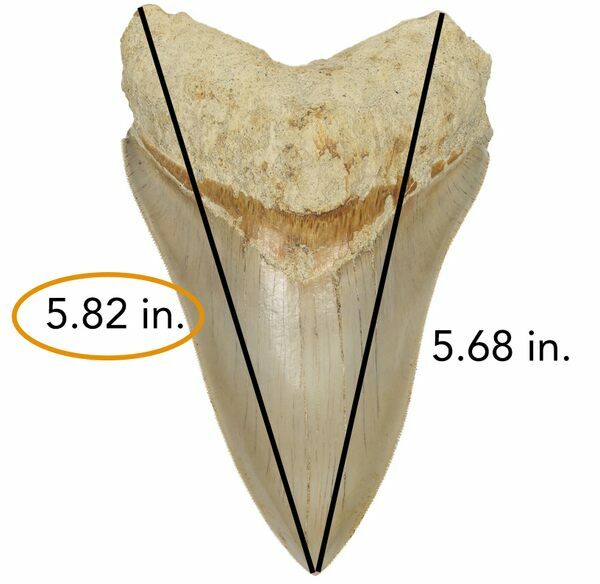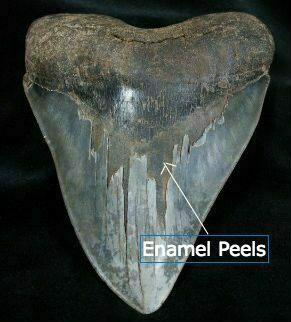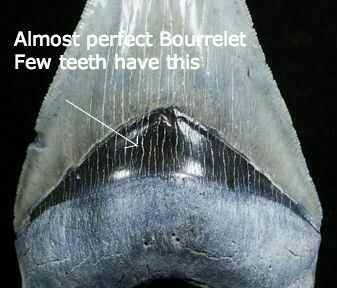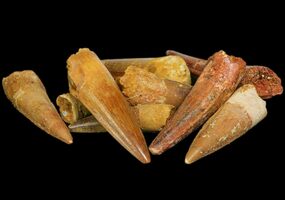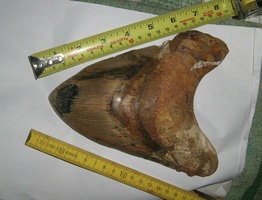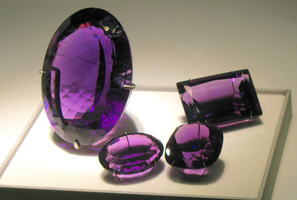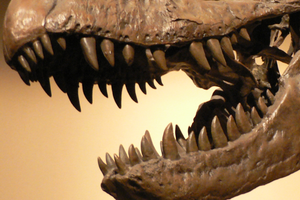Megalodon Tooth Buyers Guide
Have you ever wanted to own a real, fossil tooth of the largest shark to ever inhabit Earth’s oceans? Some people might be surprised to learn that fossil Megalodon teeth are not particularly rare, and can even be quite affordable. Most commercially available Megalodon teeth come from the SE United States (North Carolina, South Carolina, Georgia & Florida) The majority of them are collected by divers who find them on the bottom of rivers and even offshore after they have eroded out of the sediments they were originally preserved in.
There is a huge variation in price depending on many factors including size, quality, where they were collected, etc. While a small or low quality tooth might cost less than $50, large, collector-quality teeth can quickly run into the thousands and even tens of thousands of dollars. So, it’s important to know what factors to look for when deciding to buy a Megalodon tooth.
Tooth Size
First a note on how Megalodon teeth are measured. Megalodon teeth are always measured using the diagonal length from the corner of the root to the tip of the tooth. The longer of the two diagonals is the length of the tooth. We always use digital calipers to get an accurate measurement as small changes in tooth size can have a big impact in price, particularly with larger teeth.
Megalodon sharks shed their teeth frequently as they grew or their teeth became worn. Since most sharks didn’t live long enough to become super-sized adults, smaller teeth are more frequently preserved in the fossil record than large ones. The larger the tooth, the rarer it is and the more it is worth. Teeth of baby Megalodon sharks might be as small as an inch long, while the teeth of fully grown behemoths can exceed 6 inches in length.
From most locations, teeth up to 4 or 5 inches are still considered relatively common but once you get close to 6 inches they start to get much more rare and the price increases exponentially. To give you a general price range for commercial grade (has some defects) Megalodon teeth. 2-3” teeth will typically be in the $20 to $60 range, 3-4” teeth will fall into the $50-100 range, 4-5” teeth the $100-200 range, 5-5 ½” teeth $200-400, etc. Keep in mind those price ranges are for your run of the mill, Megalodon teeth from common locations like the Carolinas, other factors discussed later can increase the price many times.
As you near the magical size of 6 inches (a very large tooth) the price really starts to skyrocket. A 6 inch tooth will typically sell for more than twice as much as a comparable 5 ¾ inch tooth. Exceedingly rare teeth in excess of 7 inches have been found. I haven’t seen a tooth of that size come onto the market in years. If one did come up for sale the price would almost certainly run well into the tens of thousands of dollars.
Tooth Condition
The overall condition of a Megalodon tooth has just as big of an impact on pricing as does size. A tooth with almost no flaws is very rare, so the price will be many times higher than a tooth with only a few minor flaws.
Enamel – How much of it is present and what condition is it in? It is common for larger teeth to have significant amounts of peeled enamel, particularly in the center of the blade.
Root Condition – Is the root complete or does it have significant erosion?
Condition Of Serrations - Are the serrations still visible and if so how sharp are they? Most Megalodon teeth collected from rivers and offshore will have their serrations worn to some degree.
Tip – Is the tip worn? Teeth with a sharp tip are the exception, so it adds a lot to the price. Feeding damage is very common, particularly on larger teeth.
Chipping – Are there chips out of the edge of the blade?
Bourrelet – The bourrelet is a thin band of enamel between the blade and the root. It is worn is the vast majority of teeth so having a complete or near complete bourrelet is rare.
Location Collected
Just like with real estate, it’s all about location. While Megalodon teeth can be found all over the world, you only see large numbers of commercially available teeth from a handful of locations. Location collected may not matter a lot for the average Joe that just wants a big fossil Megalodon tooth but maybe very important to a collector. If a site becomes inaccessible to collecting, for example the closing of the Lee Creek Mine in North Carolina, or Peru due to export laws, prices jump.
The most common Megalodon teeth and thus the most affordable are collected by divers off the coast of North Carolina or in the rivers of South Carolina or Georgia. You will also frequently see teeth from Florida on the market as well as more exotic locations like Indonesia and Morocco.
Repaired Or Restored Teeth
Repair refers to gluing a broken tooth back together to make it whole again. Restoration is reconstructing a missing portion of the tooth, often done with the root or portions of enamel. Both repair and restoration have a significant impact on the value of a Megalodon tooth.
For some minor amounts of restoration to make a tooth look better is not a big deal, while for most collectors it is a deal breaker. A 5 inch Megalodon tooth with part of the root restored might be a fraction of the cost of a tooth with no restoration. Some people don’t mind buying a restored tooth at ⅓ the cost, but most collectors avoid restored teeth. It’s important to know what you are buying. Some of the teeth I sell have been restored or repaired but I always clearly note this in the descriptions, and the prices reflect the alterations. Unfortunately not all sellers are upfront about this, and some are simply dishonest even when asked.
Polishing/Buffing
One process often used to clean Megalodon teeth is to buff it to clean the surface and this will often add a little shine to the enamel too. This is something considered acceptable by most collectors and the cleaning if done well will usually increase the value of a tooth.
But, "polishing" a tooth on the other hand is where the tooth is heavily polished to the point of removing enamel in order to hide surface defects. You can take a pretty gnarly tooth and polish it to make it look semi-attractive. Because this process is in effect doing significant damage to the tooth, the tooth would be far less valuable than an unpolished tooth. Most collectors aren't interested in polished teeth.
Other Factors:
Unique Coloration - Sometimes a tooth will have a unique coloration for the site it was found and these teeth will command premiums.
Shape & Location In Mouth - The location the tooth was in the mouth of the sharp determines the shape. Lower teeth will be dagger shaped while posterior teeth will be short and wide. Some collectors prefer different shaped teeth.
Weight - In addition to length, overall size makes a difference. Wider, larger, heavier teeth are more valuable.
Pathologies - Anything that makes a tooth unique and rarer can make it more valuable to collectors. Pathologies or deformations that happened while the shark was alive can make a tooth more valuable. There are collectors that specialize in collecting Megalodon teeth with pathologies.
 Reviews
Reviews
